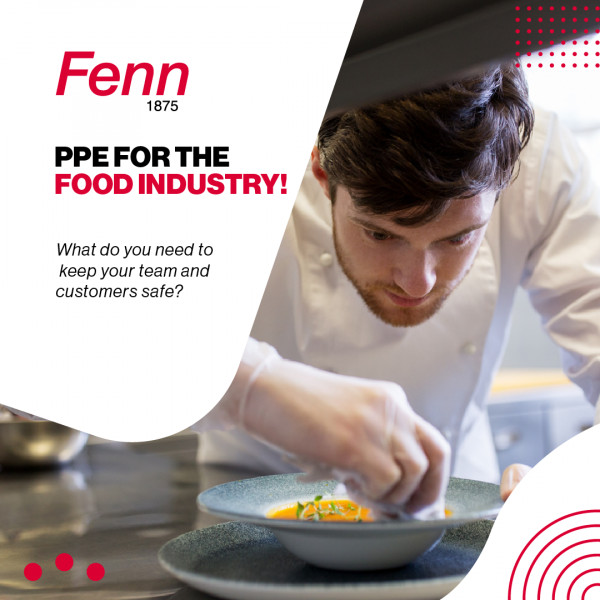Working in the food industry comes with a wealth of regulation around hygiene and protection. From food manufacturing to preparation - every stage of the journey requires PPE for the safety of your employees and your consumers. However, different parts of the journey call for specific PPE and the range of equipment needed can seem daunting.
To help you understand all the forms of PPE required for each stage of the journey, we’ve created this guide.
PPE for food manufacturing
In many mills and factories where our food is made, there is hazardous equipment and loud machinery. These environments are designed for efficiency, cleanliness and safe working practices, yet all risks remain unmitigated without PPE. Some of the most important elements of PPE needed are:
Ear protection: many processes emit hazardous noise levels in the range of 85dB(A), with some industries reaching up to 100dB(A). Different environments and roles will suit earplugs better while some call for overhead ear muffs. To enhance communication while retaining protection, there’s also noise cancelling communication headsets.
Eye protection: food particles, cleaning solutions and debris can all pose a threat to employees eyesight. Having goggles or glasses will protect eyesight when working in environments or fulfilling roles where you’re exposed to the above threats.
Respiratory protection: particles from certain foods that are ground, like flour or spices, can impact an employee’s breathing for years to come. To avoid the risk of developing prolonged conditions such as asthma, it’s essential to wear face coverings that will keep out particles and dust.
PPE for food preparation
Food preparation has many elements that are hazardous, not only to the employees preparing the food, but also to the consumer. Cross contamination can be deadly for those with allergies and intolerances and there’s a heightened risk of food poisoning. Some of the PPE is disposable which comes with added concerns around environmental impact. Here are some of the necessary items:
Protective clothing: while aprons and overcoats are needed to protect your uniforms from spills and stains, they also help to prevent cross contamination when used correctly. Depending on the task, it will determine whether you use a multi-use overcoat or a disposable piece of protective clothing.
Disposable gloves: cleanliness is imperative when it comes to food prep so changing your gloves when going from raw meat to any other task for example will reduce the risk of food poisoning.
Footwear: working in an environment with sharp knives and heavy appliances will cause injury if anything were to fall on them. Also working long shifts on your feet in a kitchen can take its toll on the body after a prolonged period of time. Having comfortable shoes that cover the whole foot is the best practice.
For more information on specific ranges email us at This email address is being protected from spambots. You need JavaScript enabled to view it.
